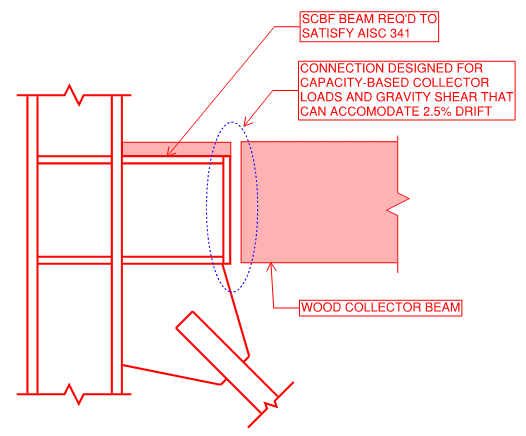dtking
Structural
- Jan 20, 2016
- 2
I'm designing a steel braced frame in a building with steel columns and wood beams. The wood beams are currently acting as collectors in most places. I have conditions at my braces that would make it advantageous to use a wood beam in the frame, but I can't find anything in AISC 341-16 precluding or allowing this. Since the braces are where the SFRS is getting it's capacity from, would it be reasonable to design a wood beam using this code and still call it a steel SCBF?
Specifically the code requires the beam and columns to be highly ductile. Direction is given in chapter 4 for steel, concrete filled, and concrete sections. No direction is given for wood (since it's pretty atypical).
Any advice would be great!
Thanks,
D
Specifically the code requires the beam and columns to be highly ductile. Direction is given in chapter 4 for steel, concrete filled, and concrete sections. No direction is given for wood (since it's pretty atypical).
Any advice would be great!
Thanks,
D

